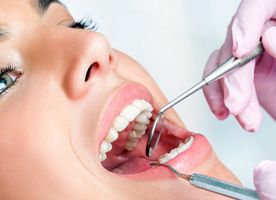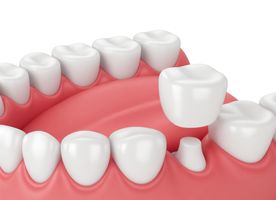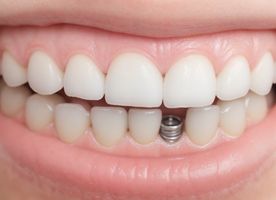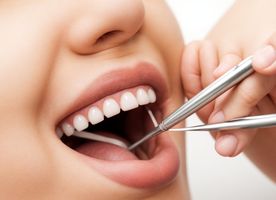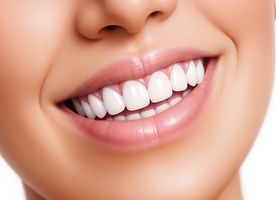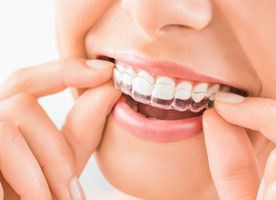Dental Bridge in Cambodia
Search and Compare the Best Clinics and Doctors at the Lowest Prices for Dental Bridge in Cambodia
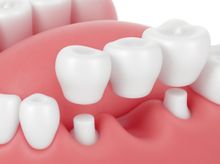



































































































































No Time?
Tell us what you're looking for and we'll reach out to the top clinics all at once
What does a Dental Bridge Procedure Involve?
You usually need several visits to the dentists to get a dental bridge and the procedure is performed under local anesthetic. During the first visit, your dentist will prepare your teeth by contouring the teeth to allow room for a crown and will make an impression that serves as a model to make the bridge. The bridge is made in a dental lab and you will have to wear a temporary bridge to protect the open teeth and gums while the actual bridge is being created. When the actual bridge is ready, the temporary bridge is removed and the new bridge is adjusted to achieve the best possible fit, then your dentist will cement the bridge into place.
How Long Should I Stay in Cambodia for a Dental Bridge Procedure?
Given the preliminaries prior to the dental procedure, the time consumed for the treatment, and the required visits after the procedure, you might need to plan for a stay ranging between one to two weeks in Cambodia. However, there could be variations in the estimated duration due to factors like the intricacy of the treatment, your recovery speed and specific dental health circumstances.
The responsibility of a dental specialist is crucial here, as they need to meticulously oversee the treatment results, make necessary modifications, and assure your recuperation is optimal. Out of practicality, it is recommended that you stay nearby the clinic you have chosen. Additionally, having frequent and open interactions with your dental specialist will permit you to communicate any concerns or discomfort promptly. This will thus enable addressing of any issues swiftly and ensure a smooth and unhindered recovery process.
What's the Recovery Time Like?
You may experience minor pain and swelling, but these will subside within a few days. It may take seven to 10 days until you can get back to your normal diet. During this time, it's essential to follow all post-procedure advice, such as maintaining oral hygiene, avoiding certain foods, and scheduling follow-up appointments for check-ups and possible adjustments. However, you can go back to work and continue with all other activities the day after the procedure.
What sort of Aftercare is Required for Dental Bridge Procedures in Cambodia?
Effective aftercare is crucial to the success and longevity of your Dental Bridge. Proper dental hygiene routines should be diligently maintained, such as regular brushing, flossing, and usage of an antimicrobial mouthwash. Ensure you brush your teeth twice a day, floss once a day, use an antiseptic mouthwash, visit your dentist regularly, and eat a diet high in vegetables and fruits. Regular check-ups are also essential to monitor the bridge and underlying oral health. Furthermore, lifestyle choices like cessation of smoking and maintaining a balanced diet can also greatly contribute to the upkeep of your dental bridge.
What's the Success Rate of Dental Bridge Procedures?
Success stories have frequently stemmed from the Dental Bridge, resulting in many individuals reclaiming their radiant smiles for extended periods. When given the appropriate care, dental bridges have the potential to endure up to 15 years, or perhaps even more. Such an achievement, nonetheless, is a culmination of several contributing elements. Key among these is a patient's dedication to uphold oral cleanliness, regular consultations with the dental expert, and adoption of a wholesome lifestyle that immensely boosts the longevity of this procedure.
The composition materials of the bridge, the acumen and proficiency of the dentist, as well as the well-being of the adjacent teeth and gums considerably influence the triumph of the treatment. Even top-tier dental procedures may fall short if the oral conditions aren't favorable for the seamless operation and life-span of the bridge. Hence, it becomes crucial to retain prime gum health and adhere to habitual dentist appointments.
Are there Alternatives to Dental Bridge Procedures in Cambodia?
Several substitute options exist for the Dental Bridge, which are contingent on a person's distinctive dental state, financial plan, and personal inclinations. A familiar substitute is dental implants, a type of prosthetic procedure wherein a titanium support is operationally fitted into the jawbone and followed by attaching a cap to simulate the look of a natural tooth. Dental implants are renowned for their robustness and real appearance, though they may not be feasible for all, particularly those with insufficient bone density or people seeking a more budget-friendly solution.
Another sought-after choice is partial dentures, that are detachable, typically constructed from a mixture of metal and acrylic, and can be an appropriate selection for individuals missing multiple teeth in succession. Partial dentures are less invasive than dental implants and dental bridges, and are also more economical. However, they might not offer the same degree of stability or comfort. Remember, these substitutes come with distinct maintenance needs and potential risks; therefore, a discussion with your dentist about these factors will assist you in making a well-informed decision.
This information has been accurately sourced and verified by a medical professional for its accuracy, however, we strongly recommend you to consult with your doctor before pursuing medical procedures overseas.











